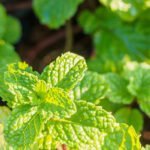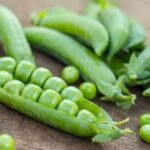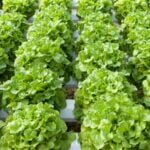Are you wondering what is the best soil for vegetable gardens? The success of your vegetable garden largely depends on the type of soil you use. In this article, we will delve into the importance of soil for vegetable gardens and explore the different factors that contribute to healthy and thriving plants. Understanding the basics of soil composition, types of soil, and the significance of organic matter will help you make informed decisions when preparing your garden for planting.
The quality of the soil in your vegetable garden plays a crucial role in determining the health and productivity of your plants. Factors such as pH levels, nutrient content, and texture all have a significant impact on how well your vegetables will grow. Knowing how to assess these factors and choose the right type of soil is essential for a successful harvest.
As we explore the fundamentals of soil composition and its implications for vegetable gardening, we will also discuss the importance of organic matter and how it contributes to a fertile and nourishing environment for plants. Additionally, we will cover testing and amending techniques to ensure that your soil provides an optimal growing environment for your vegetables. Join us as we uncover the secrets to cultivating a bountiful vegetable garden through proper soil management.
Understanding the Basics of Soil Composition
When it comes to creating a thriving vegetable garden, understanding the basics of soil composition is essential. One key factor to consider is the pH level of the soil. Different vegetables thrive in different pH levels, so it’s important to test your soil and make adjustments as needed. For example, most vegetables prefer a slightly acidic soil with a pH level between 6.0 and 7.0.
In addition to pH levels, the nutrients present in the soil are crucial for the growth and development of vegetables. Essential nutrients include nitrogen, phosphorus, potassium, calcium, magnesium, and sulfur. These nutrients can be naturally occurring in the soil or added through organic or synthetic fertilizers.
Furthermore, the texture of the soil plays a significant role in vegetable gardening. The ideal soil texture for most vegetables is loamy, which consists of a balanced mixture of sand, silt, and clay. Loamy soil provides good drainage while retaining enough moisture for plant roots to access water and nutrients.
| Soil Component | Ideal Range |
|---|---|
| pH Level | 0-7.0 |
| Nutrients | Nitrogen, phosphorus, potassium, calcium, magnesium, sulfur |
| Texture | Loamy (balanced mixture of sand, silt, and clay) |
Types of Soil for Vegetable Gardens
When it comes to selecting the best soil for vegetable gardens, it’s important to understand the different types of soil available and how they can affect plant growth. The four main types of soil are clay, sandy, loamy, and silt, each with its own unique characteristics and benefits for growing vegetables.
Clay soil is known for its ability to retain moisture and nutrients, making it ideal for certain types of vegetables that prefer consistently moist conditions. However, clay soil can also become compacted easily, which may hinder root growth and water drainage. Sandy soil, on the other hand, drains quickly and warms up faster in the spring, making it suitable for heat-loving vegetables like peppers and tomatoes.
Loamy soil is often considered the gold standard for vegetable gardening because it contains a balanced mix of sand, silt, and clay. This type of soil has good drainage while retaining moisture and nutrients, making it suitable for a wide range of vegetables.
Lastly, silt soil is similar to sandy soil but with smaller particles that hold onto moisture better. Understanding the type of soil you have in your garden will help you make informed decisions about what vegetables to plant and how to care for them.
In order to determine the type of soil in your garden, a simple hand test can be done by grabbing a handful of wet soil and squeezing it into a ball. Clay soils will hold their shape easily while sandy soils will crumble apart.
Loamy soils will form a ball that crumbles when touched, and silt soils will hold their shape slightly but still break apart with some pressure. Once you know what type of soil you are working with, you can then take steps to amend it as needed for optimal vegetable growth.
The Importance of Organic Matter in Soil for Vegetable Gardens
When it comes to vegetable gardening, having the right soil composition is crucial for the success of your plants. One key component of healthy soil for vegetable gardens is the presence of organic matter. Organic matter provides a range of benefits for the soil and the plants that grow in it. Here are some important reasons why organic matter is essential for vegetable gardens:
- Improves soil structure: Organic matter helps improve the structure of the soil, making it more crumbly and easier to work with. This allows for better aeration and water retention, which are essential for promoting healthy root growth in vegetables.
- Provides essential nutrients: Organic matter contributes valuable nutrients to the soil, such as nitrogen, phosphorus, and potassium, that are essential for plant growth. These nutrients are released slowly as organic matter breaks down, providing a steady supply to your vegetable plants.
- Enhances beneficial microbial activity: Organic matter supports diverse microbial life in the soil, including beneficial bacteria and fungi. These microorganisms play a vital role in breaking down organic matter and converting nutrients into forms that are accessible to plants.
Incorporating organic matter into your vegetable garden’s soil can be done through various methods, such as adding compost, aged manure, or cover crops. By enriching your soil with organic matter, you can create an optimal environment for your vegetables to thrive and produce bountiful harvests.
Testing your soil composition regularly can help determine if there is an adequate amount of organic matter present or if additional amendments are needed to maintain a healthy balance. By prioritizing the inclusion of organic matter in your soil management practices, you can set your vegetable garden up for long-term success and productivity.
Testing and Amending Your Soil for Optimal Vegetable Growth
Once you have identified the type of soil in your garden, it is essential to test it to determine its pH levels, nutrient content, and texture. Testing your soil will provide crucial information about its composition and help you understand what amendments may be necessary to optimize the soil for vegetable growth.
There are several methods to test your soil, including DIY kits or sending a sample to a professional laboratory for analysis. Once you have the results, you can then amend your soil as needed. Common amendments include adding lime to raise the pH levels for acidic soils or sulfur for alkaline soils. Additionally, adding organic matter such as compost or well-rotted manure can improve nutrient levels and overall soil structure.
It’s important to note that soil testing should be an ongoing process, as the needs of your vegetable garden may change from season to season. Regular testing and amending of your soil will ensure that your vegetables have the best possible growing conditions and will lead to a bountiful harvest.
- Test your soil for pH levels, nutrients, and texture
- Amend your soil based on the test results
- Regularly test and amend your soil for optimal vegetable growth
Best Practices for Preparing the Soil for Planting Vegetables
When preparing the soil for planting vegetables, it is important to start by testing the pH levels, nutrients, and texture of your soil. Different vegetables thrive in different soil conditions, so it’s crucial to understand what type of soil you have and how to make adjustments if necessary. The ideal pH level for most vegetables is between 6.0 and 7.5, with some plants like blueberries preferring more acidic soil.
After testing your soil, it may be necessary to amend it with organic matter such as compost or well-rotted manure. This helps improve the soil structure, retention of moisture, and provides essential nutrients for plant growth. Incorporating organic matter can also help balance out the soil composition for better drainage and aeration.
In addition to adding organic matter, tilling or turning over the soil can help break up compacted earth, eliminate weeds, and mix in any amendments thoroughly. However, it’s important not to over-till the soil as this can disrupt its natural structure and beneficial organisms. Once the soil has been tested, amended, and tilled if necessary, it will be ready for planting vegetables.
| Soil Preparation Step | Importance |
|---|---|
| Testing pH levels, nutrients, and texture | Understanding what type of adjustments are needed |
| Amending with organic matter | Improves soil structure and nutrient content |
| Tilling or turning over the soil | Eliminates weeds and mixes in amendments |
Soil Maintenance
Watering
Proper watering is crucial for maintaining healthy soil in vegetable gardens. Different vegetables have different water requirements, so it’s important to research the specific needs of the vegetables you are growing. In general, a good rule of thumb is to provide about 1 inch of water per week, either through rainfall or irrigation. It’s also important to water deeply and less frequently to encourage deep root growth and prevent shallow roots.
Mulching
Mulching helps to maintain soil moisture, suppress weeds, and regulate soil temperature. Organic mulches such as shredded leaves, straw, or grass clippings can also add valuable organic matter to the soil as they break down. Mulching will also help prevent soil compaction caused by heavy rain or over-irrigation.
Preventing Erosion
Erosion can be a major problem in vegetable gardens, especially in areas with sloped terrain. To prevent soil erosion, consider planting cover crops such as clover or vetch during the off-season. These cover crops will protect the soil from erosion and add nutrients when tilled back into the soil before planting vegetables. Additionally, using retaining walls or terracing on slopes can help control erosion and retain valuable topsoil.
By paying close attention to these aspects of soil maintenance in your vegetable garden, you can ensure that your plants have the best possible growing conditions and maximize your harvest.
Choosing the Right Soil for Specific Types of Vegetables
When it comes to choosing the right soil for specific types of vegetables, it’s important to consider the individual needs of each plant. Different vegetables thrive in different soil conditions, so understanding these requirements is essential for a successful garden. For example, root vegetables such as carrots and radishes prefer loose, well-draining soil with plenty of organic matter, while leafy greens like lettuce and spinach do best in fertile, moisture-retentive soil.
Tomatoes are another popular vegetable that have specific soil preferences. They require well-draining, nutrient-rich soil with a slightly acidic pH level. This type of soil provides the ideal environment for tomatoes to develop strong root systems and produce an abundant harvest. On the other hand, members of the brassica family, such as cabbage and broccoli, thrive in soil that is high in organic matter and has a slightly alkaline pH level.
In addition to understanding the specific soil needs of different types of vegetables, it’s also important to consider crop rotation when planning your garden. This practice helps maintain healthy soil by reducing the buildup of pests and diseases associated with certain crops. By rotating your vegetable plantings each season, you can ensure that the soil remains balanced and fertile for optimal growth.
Conclusion
In conclusion, the success of a vegetable garden heavily relies on the type of soil used and how well it is maintained. The ideal soil for vegetable gardens is one that is well-balanced in pH levels, rich in nutrients, and has a good texture. While different types of soil such as clay, sandy, loamy, and silt can be suitable for vegetable gardening, it’s important to understand the specific needs of the vegetables being grown and choose accordingly.
Furthermore, organic matter plays a crucial role in maintaining healthy soil for vegetable gardens. It improves soil structure, provides essential nutrients, retains moisture, and encourages beneficial microbial activity. Testing and amending the soil as needed is also vital to ensure optimal growth conditions for vegetables.
Lastly, proper soil maintenance through watering, mulching, and erosion prevention is necessary to sustain a healthy vegetable garden. By choosing the right soil for specific types of vegetables and following best practices for preparing and maintaining the soil, gardeners can create an environment that promotes successful harvests year after year. Remembering these key points will help ensure a bountiful and thriving vegetable garden.
Frequently Asked Questions
What Type of Soil Is Best for Vegetable Garden?
The best type of soil for a vegetable garden is loamy soil, which is a balanced mixture of sand, silt, and clay. Loamy soil provides good drainage while also retaining essential moisture and nutrients for vegetable plants to thrive.
What Kind of Soil Do You Use for Raised Vegetable Beds?
For raised vegetable beds, it’s important to use a well-draining soil mix that contains organic matter. A common recommendation is to use a combination of topsoil, compost, and other organic materials to create a nutrient-rich growing environment for vegetables in raised beds.
What Soil to Use for Growing Vegetables in Containers?
When growing vegetables in containers, it’s best to use potting mix specifically designed for container gardening. This type of soil provides good drainage and aeration for the roots of the plants while also containing the necessary nutrients to support healthy growth.
Look for potting mixes labeled for vegetables or fruits to ensure they have the right blend of ingredients needed for successful container gardening.

If you’re looking to get into vegetable gardening, or are just looking for some tips on how to make your current garden better, then you’ve come to the right place! My name is Ethel and I have been gardening for years. In this blog, I’m going to share with you some of my best tips on how to create a successful vegetable garden.





